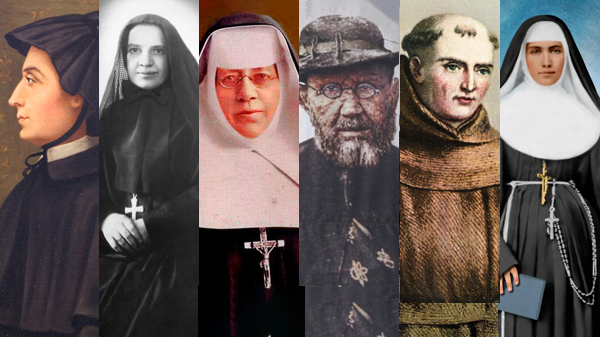By Ambassador Callista L. Gingrich
September 14 marked the 48th anniversary of the canonization of Saint Elizabeth Ann Seton, the first U.S.-born citizen to be declared a saint, by Saint Pope Paul VI in 1975.
Born to a prominent Episcopal family in New York City in 1774, Elizabeth suffered significant loss and hardship before discovering her Catholic faith and entering the church in 1805. While raising her children as a single widow, Elizabeth started the Sisters of Charity of St. Joseph’s, the first congregation of religious sisters founded in the United States.
Mother Seton and the sisters worked to serve underprivileged children and, among their various initiatives, opened an orphanage and a Catholic school for girls to attend for free.
Elizabeth dedicated her life to serving God and Americans who were less fortunate. She remains a source of inspiration and hope for those striving to live a life of faith in Jesus Christ.
As Pope Paul VI said during the canonization Mass, “Saint Elizabeth Ann Seton is an American. All of us say this with spiritual joy, and with the intention of honoring the land and the nation from which she marvelously sprang forth as the first flower in the calendar of the saints.”
In addition to Saint Elizabeth Seton, other Americans have been canonized.
One such example can be found in Saint Frances Xavier Cabrini, the patron saint of immigrants. Mother Cabrini came to the United States from her native Italy in 1889 after founding the Missionary Sisters of the Sacred Heart of Jesus. She started Catechism classes for more than 300 children and opened an orphanage. Mother Cabrini also founded 67 schools, hospitals, and orphanages around the world and established missions in the United States, Central America, South America, and Europe.
In 1909, Mother Cabrini became an American citizen, and in 1946, she was canonized as the first American saint by Pope Pius XII.
Saint Katharine Drexel, founder of the Sisters of the Blessed Sacrament, was canonized by Saint Pope John Paul II in 2000. A well-educated young woman born to a wealthy and devout Catholic family in Pennsylvania, Katharine left the comforts of her life behind to become a missionary to Black and Native Americans. Her work had a great impact as she started, staffed, and supported almost 60 schools and missions. In 1925, Katherine started the only predominantly Black Catholic institution of higher education in the U.S., Xavier University of Louisiana.
Additionally, Saint Damien de Veuster of Molokai and Saint Marianne Cope – were canonized in 2009 and 2012, respectively. Both were devout and selfless servants who ministered to the lepers of Molokai, Hawaii.
Following his ordination to the priesthood in 1864, Father Damien served as a missionary in Hawaii before volunteering to work with exiled and abandoned lepers on the island of Molokai in 1873.
Nearly a decade later, Father Damien met Mother Marianne — a professed Sister of Saint Francis who had worked as a teacher, principal, novice mistress of her congregation and superior of Saint Joseph’s Hospital in Syracuse. Mother Marianne had come to Hawaii with other Sisters of Saint Francis to work with leprosy patients and to help manage hospitals and schools.
After Father Damien contracted leprosy (which led to his tragic death), Mother Marianne offered him kindness and care. Months before he died, Mother Marianne joined Father Damien on Molokai and promised to continue the work that he started.
Moreover, Saint Junípero Serra, who was canonized in 2015 by Pope Francis at the Basilica of the National Shrine of the Immaculate Conception in Washington, D.C., dedicated his life to serving and sharing the Catholic faith with Native Americans. He spent two decades working in Mexico before journeying north into present-day California where, beginning in 1769, he established nine of California’s 21 missions.
At the time of his death in 1784, Junípero Serra had baptized more than 6,000 people and confirmed more than 5,000 Catholics.
These saints have played important roles in our nation’s history by sharing their compassion and love for Jesus Christ with others.
As we celebrate the anniversary of Saint Elizabeth Ann Seton’s canonization, let us remember her and all those who have been recognized as saints throughout America’s history.


